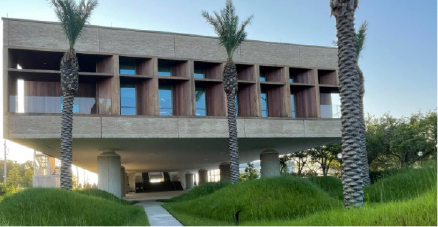The Gullah Geechee people, descendants of enslaved Africans who settled along the coasts of South Carolina, Georgia, and beyond, have a rich cultural heritage that extends deeply into architecture. Their building traditions tell stories of resilience, resourcefulness, and cultural identity—an essential chapter of South Carolina’s architectural history.
Gullah Geechee’s vernacular architecture is characterized by its adaptation to the climate, available materials, and communal way of life. Structures such as modest wooden homes, cabins, and praise houses—small places of worship—are among the most iconic. These buildings emphasize simplicity and utility, often featuring raised foundations for ventilation and protection from flooding, wide porches to accommodate social gatherings, and roofs designed for heavy rains.
A unique architectural contribution is a tabby concrete created by mixing lime, sand, water, and oyster shells. This technique, brought from West Africa, was common in coastal South Carolina. One enduring example is the Tabby Ruins at Yemassee, where the remnants of plantation-era structures still stand as silent witnesses to history.
Equally significant are the praise houses, like those found on St. Helena Island. These humble, single-room structures were central to Gullah’s spiritual and communal life. They represent a unique blend of African traditions and Christianity, with architectural simplicity mirroring their purpose as sacred gathering spaces.
In recent years, the importance of preserving Gullah Geechee’s architecture has gained recognition. As development threatens historic coastal communities, organizations like the Gullah Geechee Cultural Heritage Corridor Commission are working to document and protect this irreplaceable heritage. Preservation efforts help ensure that these buildings remain a tangible link to a culture that has profoundly shaped South Carolina’s identity.
Visitors can explore places like the Penn Center on St. Helena Island to celebrate and support this heritage. Once a school for freed slaves, it now serves as a cultural center, preserving Gullah Geechee’s history, traditions, and architecture for future generations.
By understanding and protecting these structures, we honor the ingenuity and resilience of the Gullah Geechee people and ensure their contributions continue to shape South Carolina’s cultural and architectural narrative.
For more on this topic, see:
Penn Center – St. Helena Island
Gullah Geechee Cultural Heritage Corridor
The International African American Museum


